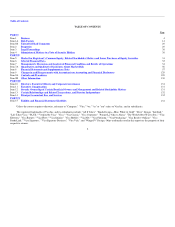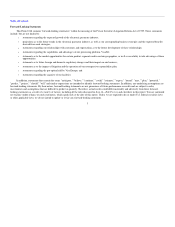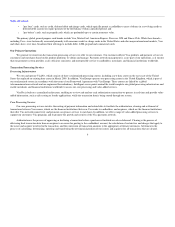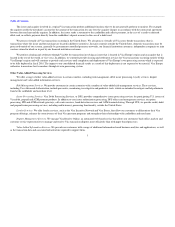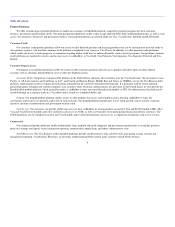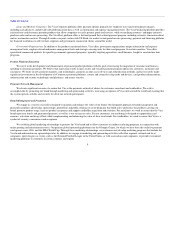Visa 2009 Annual Report Download - page 12
Download and view the complete annual report
Please find page 12 of the 2009 Visa annual report below. You can navigate through the pages in the report by either clicking on the pages listed below, or by using the keyword search tool below to find specific information within the annual report.
Table of Contents
To manage our exposure in the event our customers fail to fund their settlement obligations, we have a credit risk policy with a formalized set of credit
standards and risk control measures. We regularly evaluate customers with significant settlement exposure to assess risk. In certain instances, we may require
a customer to post collateral or provide other guarantees. If a customer becomes unable or unwilling to meet its obligations, we are able to draw upon such
collateral or guarantee in order to minimize any potential loss. We may also apply other risk control measures, such as blocking the authorization and
settlement of transactions, limiting the use of certain types of agents, prohibiting initiation of acquiring relationships with certain high-risk merchants or
suspending or terminating a customer's rights to participate in our payments network. The exposure to settlement losses is accounted for as a settlement risk
guarantee. The fair value of the settlement risk guarantee is estimated using our proprietary model. Key inputs to the model include the probability of
customers becoming insolvent, statistically derived loss factors based on historical experience and estimated settlement exposures at period end.
Payment System Integrity
The integrity of our payments system is affected by fraudulent activity and other illegal uses of our products. Fraud is most often committed in
connection with lost, stolen or counterfeit cards or stolen account information resulting from security breaches of systems that store cardholder or account
data, including systems operated by merchants, financial institutions and other third-party data processors.
Our fraud detection and prevention offerings include Verified by Visa, a global internet authentication product, which permits cardholders to
authenticate themselves to their issuing financial institution using a unique personal code; Visa Advanced Authorization, which adds additional fraud
detection capability by adding real-time risk scores to authorization messages; and chip and PIN programs that have been demonstrated to reduce the
incidence of certain types of fraud at physical point-of-sale locations. We have also implemented rules that require the use of more secure PIN encryption
standards for ATMs and point-of-sale PIN entry devices installed after 2002 and 2003. We have also mandated that all PINs transmitted through VisaNet to
the issuer be encrypted using the Triple DES, or Data Encryption Standard, by July 1, 2010.
Interchange Reimbursement Fees
Interchange represents a transfer of value between the financial institutions participating in an open-loop payments network such as ours. On purchase
transactions, interchange reimbursement fees are typically paid to issuers by acquirers in connection with transactions initiated with cards in our payments
system. We set default interchange rates in the United States and other regions. In certain jurisdictions, interchange rates are subject to government regulation.
Although we administer the collection and remittance of interchange reimbursement fees through the settlement process, we generally do not receive any
portion of the interchange reimbursement fees. Interchange reimbursement fees are often the largest component of the costs that acquirers charge merchants in
connection with the acceptance of payment cards. We believe that interchange reimbursement fees are an important driver of system volume.
We believe the interchange rates that we use promote the efficient operation of our payments network by enabling both the issuer and the acquirer to
understand the economics of a given transaction before entering into it and by eliminating the need for each of our customers to negotiate transfer pricing with
each other. By establishing and modifying default interchange rates in response to marketplace conditions and strategic demands, we seek to ensure a
competitive value proposition for transactions using our cards in order to encourage electronic transactions and to maximize participation in the Visa
payments system by issuers and acquirers and, ultimately, consumers and merchants. We believe that proper management of interchange rates benefits
consumers, merchants,
11



